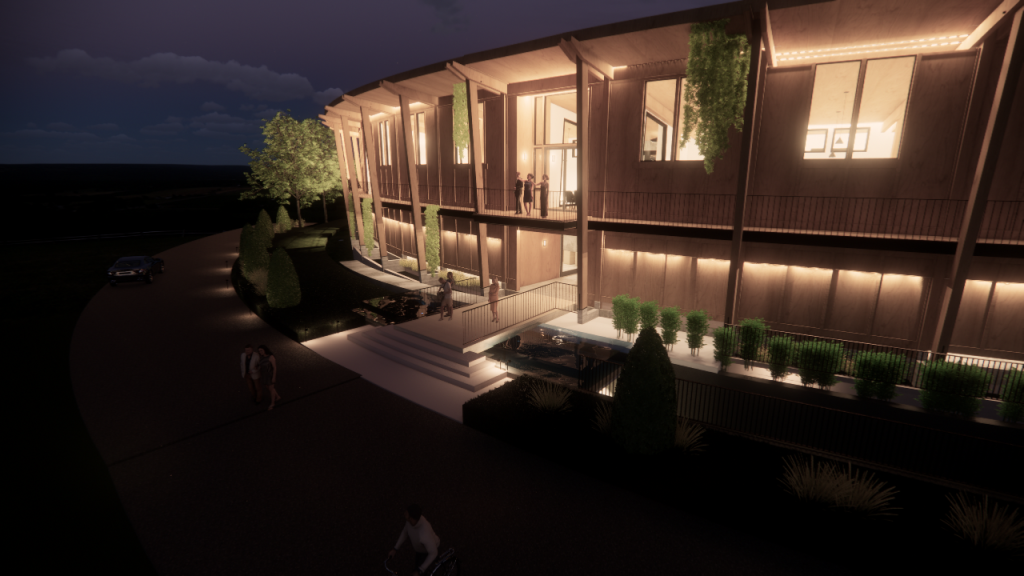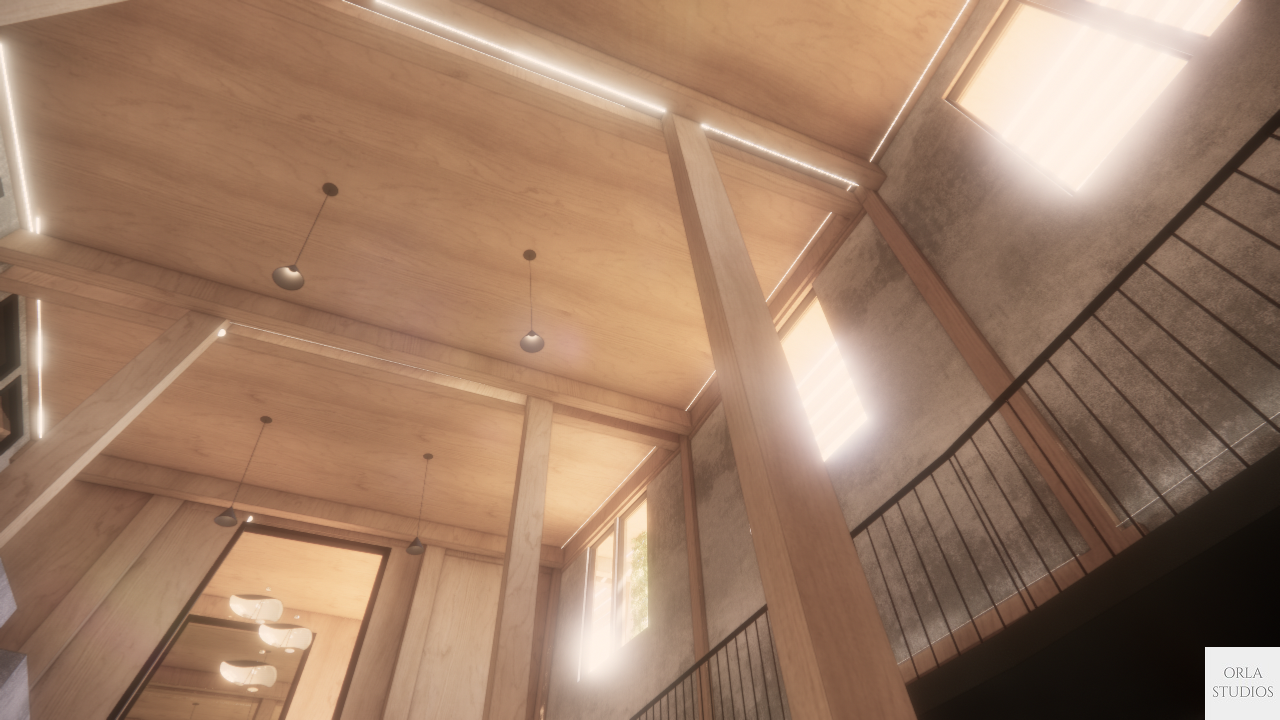John Marsh Davis Legacy: A Testament to Green Design and Innovation in the Sullivan Rutherford Estate Winery New Building

The Sullivan Rutherford Estate Winery has long been known for its exceptional wines, picturesque vineyards, and commitment to sustainable practices. Recently, the winery took a significant step forward in its sustainability journey with the design of its new building, with Orla Studios architect, Orla Huq and Hans Baldauf.
The remarkable collaboration between Huq and the winery, highlighted in their use of cross-laminated timber (CLT) mass timber design and green principles in creating the stunning building.

CLT Mass Timber Design and Sustainability:
At the forefront of sustainable architecture, Orla employed cross-laminated timber (CLT) as the primary construction material for the new building. CLT is a versatile and sustainable alternative to traditional construction materials such as concrete and steel. It is composed of layers of lumber boards stacked and glued together in alternating orientations, resulting in a strong and durable material that reduces the carbon footprint associated with construction.

The use of CLT in the new building offers several sustainability benefits. First, CLT is derived from sustainably managed forests, making it a renewable resource that helps mitigate deforestation. Secondly, the production of CLT requires significantly less energy and produces fewer greenhouse gas emissions compared to conventional building materials. Lastly, CLT offers exceptional thermal performance, reducing the need for excessive heating and cooling and thereby minimizing energy consumption.

Green Design and Environmental Stewardship:
The architectural design for the Sullivan Rutherford Estate Winery prioritized environmental stewardship and seamlessly integrated sustainable elements into the building. The design maximizes natural light penetration, reducing the need for artificial lighting during daylight hours and lowering energy consumption.
To optimize energy efficiency, the building features solar panels that generate renewable energy to power various operations within the winery. Process waste systems have been incorporated to collect and reuse water for irrigation and other non-potable uses, reducing the winery’s water use.
Additionally, the new building includes innovative systems for waste management and recycling. These systems ensure that materials generated during the winemaking process are repurposed or recycled whenever possible, minimizing waste and promoting a circular economy.

Vite Galleron: An Inspiring Blend of Art and Wine:
Within the new building, the Vite Galleron stands as a testament to the winery’s commitment to art and culture. This art display, located within the winery, will showcase a rotating collection of contemporary works by local and international artists. The tasting gallery provides a unique platform for artistic expression and enriches the visitor experience, offering a harmonious blend of art and wine in a sustainable setting.
The Sullivan Rutherford Estate Winery’s new building sets a new standard for sustainable architecture and green design within the wine industry. By utilizing CLT mass timber construction and incorporating various eco-friendly features, the winery exemplifies its dedication to environmental stewardship and sets an inspiring example for others in the industry. The inclusion of the art gallery further enhances the winery’s commitment to fostering creativity and cultural enrichment. The new building will stand as a symbol of innovation, sustainability, and the harmonious blend of art and wine.